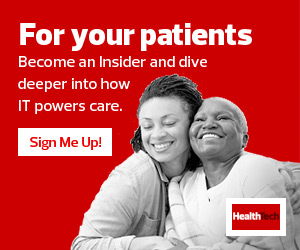For most healthcare organizations, the decision to deploy clinical mobility technology is driven by a need for optimized team communications.
Evolving circumstances and requirements can inform efforts intended to re-evaluate clinical workflows and supporting tools. COVID-19 has underscored these challenges and demonstrated the high value mobile devices can bring to providers and patients.
Clinical mobility solutions represent the convergence of communication and collaboration tools on a single device; however, video capabilities are not always included in the standard solution set.
MOBILITY IN ACTION: Discover 6 ways healthcare organizations are using mobile devices to deliver better care.
As the pandemic spread, hospitals responded by integrating virtual care platforms within their existing technology investments. For some, this involved purchasing more mobile devices and tablets to expand virtual rounding and telehealth as a surge in high-risk COVID-19 patients filled hospital beds and strained supplies of protective equipment.
The devices also have boosted the speed and accuracy of care — particularly at shift change, when information is often lost in translation.
Still, adapting technology introduces its own set of challenges, including the provisioning of new devices and deployment of video platforms. Mobile device management solutions have proved invaluable, allowing organizations to pivot more quickly.
What to Consider When Starting a Mobility Program in Healthcare
Launching a clinical mobility initiative requires a strategy that addresses current hurdles and keeps the safety of users (and their data) at the forefront.
The first step: Begin with the end in mind. Healthcare leaders should define the outcomes they’re looking to improve and confirm that existing clinical mobility platforms and investments are fit for a given purpose. Are enough devices on hand? How will leadership teams drive adoption?
GO MOBILE: Ask these 10 questions when launching a mobility effort in healthcare.
As the number of devices continues to proliferate and mobility platforms become more complex, management and governance processes must remain in lockstep to create a unified and shared user experience — regardless of whether a BYOD or shared-device policy is in place.
Replace manual provisioning processes with automation wherever possible. If devices are lost or stolen, IT teams can wipe them remotely to protect patient health information and other sensitive data.
Keep Device Compliance, Cleaning and Security Top of Mind
Infection prevention is always a priority within a hospital, especially cross-contamination between caregivers and patients. Healthcare organizations address this through a mix of administrative controls and procedures.
Not surprisingly, healthcare organizations are concerned when the topic of shared devices comes up. Approaches include anti-microbial device cases, UVC cleaning solutions and thorough wipe-downs at shift changes. Hospitals must manage their processes effectively to ensure the preventive steps are taken consistently.
Hospitals should also pay attention to security and compliance concerns around the data handled by mobile tools. Meeting HIPAA and regulatory standards is a significant challenge — one further complicated by cybersecurity threats that have grown more numerous and sophisticated during the pandemic.
Multifactor authentication and device encryption supporting data at rest and in transit are considered table stakes. Healthcare organizations must ensure their video collaboration tools meet the same requirements so no weak links exist in a mobility deployment.
There’s no question mobility solutions save lives, but the work is far from over. One thing is certain: IT and clinical leaders must continue to work together as the global health situation evolves.
This article is part of HealthTech’s MonITor blog series. Please join the discussion on Twitter by using #WellnessIT.













